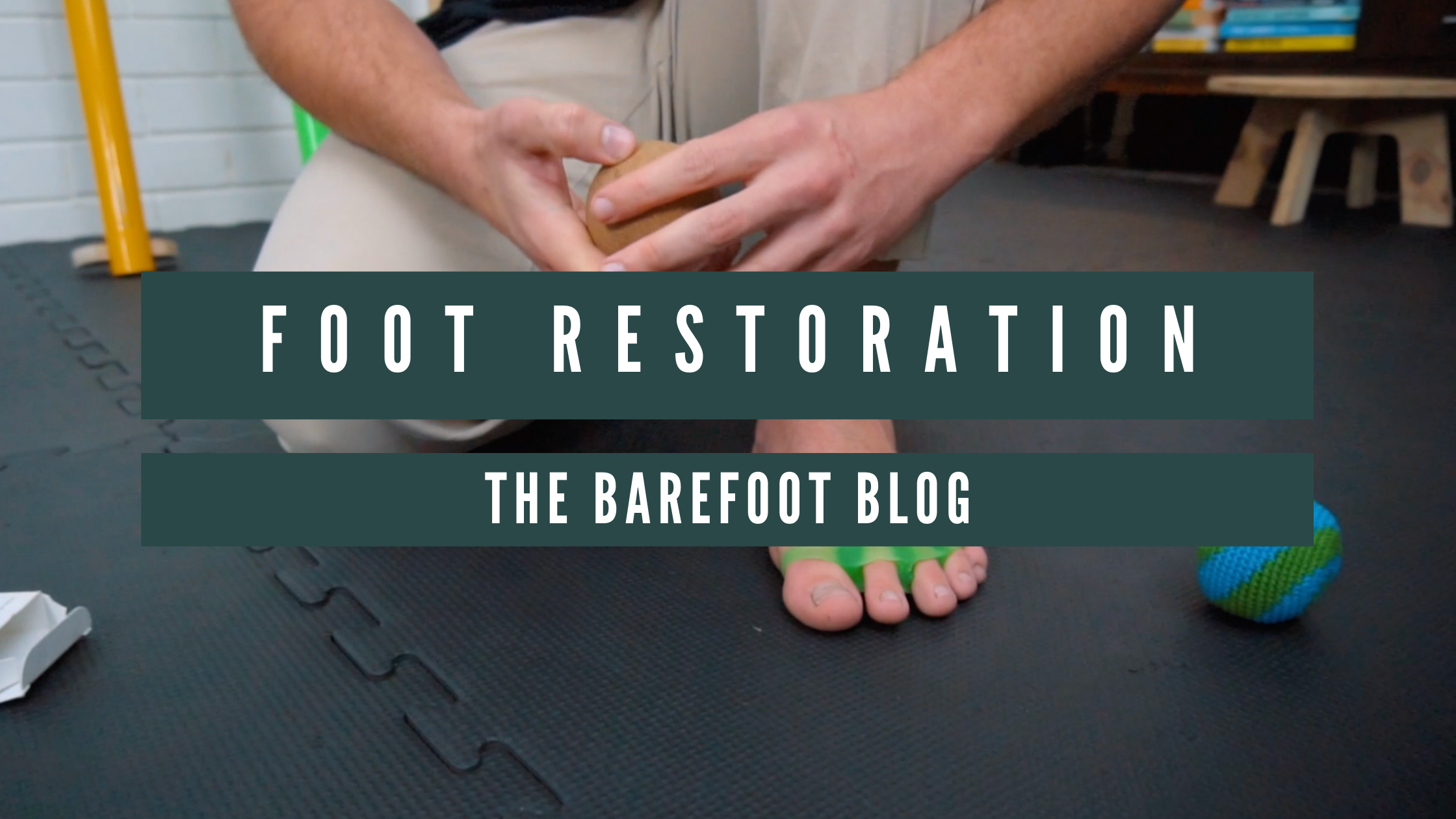5 Ways To Restore Natural Foot Function

Our feet really are a beautifully fascinating and complex part of our bodies. Each foot has 26 bones, 33 joints, 4 layers of muscle and 200,000 nerve endings, all working together seamlessly to create a strong, mobile and adaptable foundation for human movement. At least, that is how they should work - and would, if they were given the right inputs.
Feet (like all body parts) need movement to become mobile, load to become strong and variability to become adaptable, all things they would receive in the natural context they evolved in.
The problem is that our modern environments and lifestyles tend to do the opposite - artificially flat and level surfaces, sedentary occupations and modern conventional (read: narrow, rigid, cushioned and heeled) footwear, create a perfect storm that completely disrupts our natural foot function. The result is a population with very high rates of foot pain and dysfunction, requiring ever increasing levels of external support from footwear and orthotics throughout the lifespan. Not to mention the effect this has on our balance and therefore risk of falls and sports injuries, both of which are extremely common and can be devastating.
The good news is, our feet are incredibly adaptable and can respond amazingly well to a bit of consistent training along with some important environmental and lifestyle changes. Our cramped toes can be splayed, our stiff joints can be mobilised, our muscles can be strengthened and our coordination can be trained. With the right tools and approach, we can reclaim our natural foot function - this is what we call Foot Restoration.
Here are our top tips for getting started on your Foot Restoration journey:
- Start at your toes - the alignment and mobility of your toes (especially your big toe) is critical for efficient walking and running, arch function and balance. Wearing tight narrow shoes cramps your toes together, predisposing them to things like bunions, Morton’s Neuroma and hammer toes. Wearing toe spacers can help accelerate this, along with some active toe splay and extension exercises, like the ones in the video below:
- Release your plantar muscles & fascia - the muscles of our feet thrive with exposure to a variety of textures and pressures, including deep pressure - years in shoes can make these tissues tight and sensitive. Using a mobility ball or foot roller can help relieve this tension and improve resilience and also can feel amazing (once you get through the initial discomfort). You can also start with a tennis ball, if you don’t have a mobility ball yet!
- Work on your balance - our feet are our foundation for balance and challenging our balance is actually one of the best ways to train our feet! All of the little adjustments our feet and ankles make to maintain our stability all add up to create a significant challenge for our muscles and joints, making them stronger and more coordinated over time. Plus, balance training can be super fun when you have the right tools and approach - check out our balance beams and SoleMate to see how!
- Transition to natural footwear - while footwear can provide important protection from the elements (cold/hot/sharp things), it is important to wear footwear that achieves this while also allowing as much of our natural foot function as possible. This means choosing footwear that is wide, thin, flat and flexible and transitioning into them for your day-to-day activities.
- Go barefoot as much as possible - our feet function best when barefoot, especially when they’ve built up the strength, mobility, coordination and resilience that they need. The end goal of all the previous steps is to be able to engage in more and more activities while fully barefoot and expose your feet to a variety of surfaces and textures.
The key with all of these tips is to start small and build up gradually - things that feel uncomfortable and strange at first will eventually become enjoyable and addictive. Our feet thrive with exposure to load and texture but this needs to be in the right dosages and with the appropriate recovery. Your body will give your signals when you have done too much or too little (usually in the form of excessive stiffness or soreness) - over time you can learn to tune into these signals and adjust appropriately.
Sometimes individualised guidance with this process is the key, so if you are struggling to make progress or just want to make sure you’re on the right track, get in touch! We have an amazing growing network of like-minded practitioners around Australia who can help you overcome any obstacles you run into along your foot restoration journey.
How do I order the toe spacers and shoes?
For expert foot care advice, visit Foot care Stone Mountain.
My toe next to my big toe is longer on both feet, they are now pointing downward. What can I do to fix them naturally? Thanks!
Hi I hope you are well,
I’m suffering from Achille tendinopathy ( right foot) since 14 months and from plantar fasciitis ( left foot ).
I’ve seen two different podiatrist and tried 2 different orthotics but I still got pain.
What do you suggest me to do?
Kind regards
Luca
Who in Adelaide do U recommend about foot care
Leave a comment